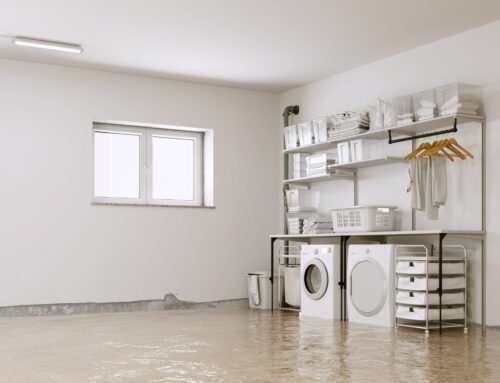When you think about it, your driveway is probably one of the most high-traffic areas of your home (pun intended.) Constant wear and tear from your vehicles, oil leaks, fertilizers and other yard chemicals, plus exposure to Alberta’s harsh environment can cause the concrete to crack and stain – affecting your home’s appeal and to a lesser extent, its value as well.
Luckily, there are a few easy ways you can maintain and protect your concrete driveway and ensure it always looks its best.
Seal it up
Concrete is porous, meaning water and dirt can eventually damage it and undermine its integrity. Applying an acrylic or polyurethane surface sealer covers and protects your concrete by penetrating a few millimeters in, but still allowing it to breathe, expand and contract.
Ideally, you should wait until the warmer, drier months to apply sealants. Thoroughly clean the driveway’s surface, and wait at least a day before applying. There are different options for sealers, but most are applied with a sprayer; carefully follow the directions provided on the container.
You can repeat the process every year or two to maintain a constant, strong barrier that protects your concrete from water and stains.
Keep it clean
You should also clean your driveway regularly to prevent the build-up of tire marks, rust stains, dirt, mold, mildew and grime. All you really need to clean concrete is a garden hose, an appropriate biodegradable detergent or degreaser and a stiff broom
Spray your driveway with water and apply the detergent, then scrub it with the stiff bristle broom to loosen up the staining material. If an oil stain is stubbornly refusing to come off, consider using a specialized degreaser or alkaline soap. For fresh oil spills, pour some baking soda, kitty litter or another absorbent material onto it before cleaning.
Mold or mildew can usually be removed with detergents, vinegar or even household bleach. Remember not to mix bleach with other cleaners and always wear gloves and other safety equipment.
Finally, you can use a pressure washer if you have really stubborn stains, but make sure you understand how powerful they can be. A power washer sprays at more than 50 times the force of a garden hose, and can actually etch or damage your concrete even more, so take care.
Pressure washers can be rented from hardware stores, or provided by professional services.
Get cracking on repairs
As mentioned earlier, Alberta’s dramatic weather can be hard on your driveway. The constant freezing and thawing in the colder months, combined with scouring winds and fierce rainstorms during the warm summer can strain parts of the concrete. Intrusive tree roots, heavy vehicles and regular ground frost can cause the ground underneath to buckle and shift as well. A whole host of issues can cause cracks to eventually appear.
When you notice cracks appearing, try to patch them right away. First, use a chisel or small screwdriver to remove small chips and loose bits of concrete and clean out any grass, dirt and dust, and then wash the driveway. Wait until your driveway is dry before filling cracks.
Concrete fillers are available in a variety of ready-to-use tubes and bottles, most with nozzles for easy application. If the cracks are larger, you may opt for a dry concrete mix or patching compound, and if they’re deep, use a compound containing gravel to help fill the gaps.
Apply the filler solution into the crack, following the directions on the container. Try to use a flexible-type filler that will move, contract and expand with your driveway. Ideally after filling the cracks, you should reapply a sealant, but ensure you’re applying it under the right conditions.
Winter maintenance
During the winter months, you can take precautions to extend the life of your concrete driveway.
While rock salt and de-icer compounds melt the ice on your driveway, ensure that you only use ones that don’t contain ammonium nitrates and ammonium sulfates, both of which actually attack concrete chemically. Also, rock salts can affect your lawn and corrode metals. Consider using sand alfalfa meal or even kitty litter to make surfaces less slippery.
Also try to use snow shovels with plastic blades instead of metal ones, as they’re less likely to scrape and scratch concrete. If you’re using a snowblower, raise the blades to avoid scratching the cement surface directly, and be careful with ice chippers; it’s easy to start chipping your cement along with that stubborn ice.
Wash away water
You can add to your driveway’s lifespan by minimizing how much water comes into contact with it. Digging a 5 cm drainage strip in the edge of your lawn adjacent to the driveway allows snow and water to drain away safely. You can also ensure that downspouts and drain leaders empty into your yard and not directly onto your driveway.
No driveway is maintenance-free, but with a little care and attention, this giant-sized welcome mat for your home will look beautiful for years to come.







It was really informative when you talked about how it is a good idea to have your concrete sealed with an acrylic or polyurethane surface sealer. If you are using concrete for your pool deck, would it still be a good idea to use these sealers? I would think that you would want to use them because pool water can get onto the concrete deck often.
Hi Henry – thanks for the comment and question. Pool chemicals can have adverse affects on unfinished concrete so using a product that is salt resistant is best.
Acrylic and polyurethane products are acceptable, but will require resealing yearly as they perform as a top coat and are subject to wear and tear. Using a penetrating sealant, such as a Silane/Siloxane sealer, will penetrate into the pores of the concrete and will not require re-application for several years.
Hi there! Thanks for helping me understand that the benefits of cleaning concrete driveways include prolonging the strength and lifespan of concrete surfaces. I have been thinking of adding a nice touch to my front entrance floor. I’ll have to remember this information so that I would hire the right professional to deal with the matter later.
Hello there! It’s me again. Now, a huge tree just fell down in front of my neighbor’s house yesterday which caused slight damage to their driveway. Luckily, I did remember what you said about adding a layer of acrylic seal to our concrete driveway to prolong its lifespan. I’ll send this information to them so they’ll be able to make the right maintenance very soon.
It was a very helpful tip when you said to repair the driveway cracks immediately if you notice one. My driveway has experienced many climates and weather conditions these past few years, so it’s only natural that the damages are starting to show. That being said, I’ll make sure to find a good company that offers the best concrete driveway services.